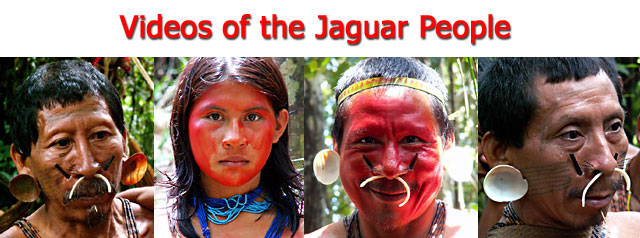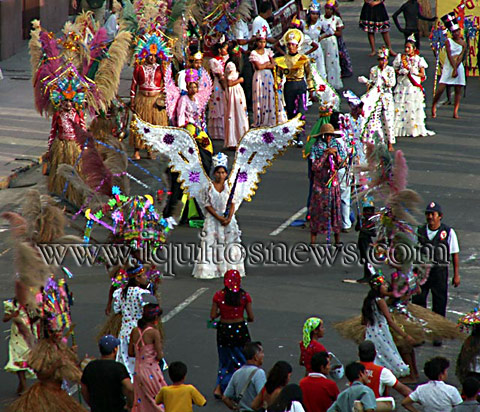isitors to Iquitos, Peru during the carnival
season may be shocked when they are soaked with a water balloon, or soiled by paint-smeared fingers. This is the
Iquitos interpretation of the Christian festival. Celebrated each year during
the week before "Fat" Tuesday, Carnival is a centuries-old ritual observed
mostly in Catholic countries. The celebrations, introduced from Europe and
widespread in the various Latin American countries, have evolved differently in
various regions and are particularly unique in Iquitos.
The Iquitos adaptation of the Carnival season starts with water-balloon fights
and concludes in the locally unique tradition of dancing around the Humisha tree on the final night. As
early as a four weeks before Carnival you will encounter young people in the
streets tossing buckets of water or water balloons at passing cars and
motorcycles. These "water wars" are really a battle of the sexes, with groups of
males throwing water at groups of females and visa versa. In addition to water,
they can incorporate flour, talcum powder, achiote (a natural dye), paint, or
oil, and you can never be quite sure what exactly was in that balloon! Although these
activities are officially against the law, the law is generally ignored by
officials.
Another Carnival tradition that is peculiar to Iquitos is the Humisha
tree. The Humisha is a palm tree that is placed in a pot, with the
leaves being tied together at the top, and the tree is hung with gifts. The
tradition of the Humisha tree is a ritual that has been handed down for
many generations in Iquitos, but questioning locals about the origins of Humisha
tree will only results in blank stares. The origin of the ritual is even obscure
to Dr. Gabel Sotil Garcia who heads the Ministry of Education and Culture in
Iquitos . “No one really knows the origin of the Humisha tree,” Dr. Sotil said. “Some
think that the origin can be traced back to the Borjas, the group who first brought the Carnival
celebrations to Iquitos during the 19th century.” The Borjas were a class of mestizos (a mix of
white and indigenous blood) who originally lived in the Andes far to the west of Iquitos. As
stated by to Dr. Sotil, in 1838 two different indigenous tribes (the Huambisas and the Aguarunas)
revolted against the Spanish Jesuit rulers and burned down the village of Borja. The
mestizo survivors of the revolt fled in boats downstream to Iquitos. This influx
of people from Borja reinforced the Catholic traditions in Iquitos as did trade
with other Catholic mestizo communities downriver in Brazil. This cultural exchange reinforced and
changed Catholic traditions in Iquitos, particularly the Carnival traditions.
Today the Humisha tree tradition is a central activity of the
Carnival celebrations in Iquitos. On the last night of Carnival, people dance around the
Humisha tree with their arms linked, and spectators douse them with
buckets of water and often with paint. Later, only the young, unmarried couples dance, arm in arm,
and the men taking turns chopping the trunk of the tree with an axe. When the tree finally falls, children
flock around the gifts that were hung on the tree, taking what ever gift they can grab. “Traditionally,
they hung things such as food, including chickens, turtles and local fruits as
gifts,” Dr. Sotil stated. “But today with a more modern society, they primarily hang
things like plastics toys.”
So if you are fortunate enough to be in Iquitos during the Carnival
celebrations, enjoy these distinctive traditions and try to get out of the way
when you see someone tossing a bucket of water at you!

|


